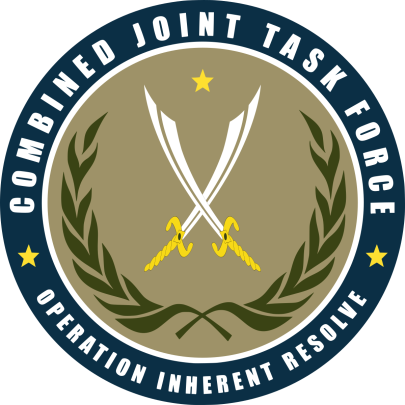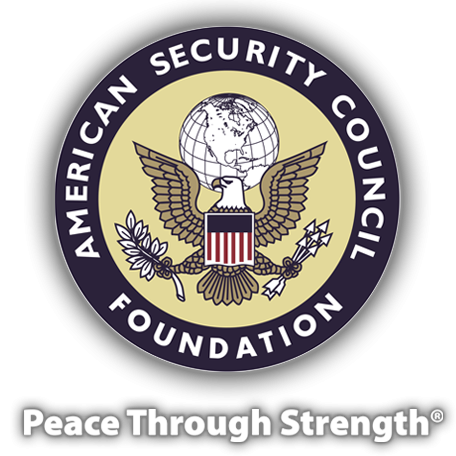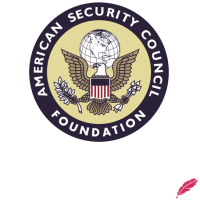Alliances, Force-Multipliers for American Power
Wednesday, September 6, 2023
Written by Alan W. Dowd, ASCF Senior Fellow
Categories: ASCF News The Dowd Report

SEPTEMBER 2023—During some of the hardest, harshest days of the Cold War, President John Kennedy reminded the American people, "We put ourselves, by our own will and by necessity, into defensive alliances with countries all around the globe.” As the Cold War began to thaw, President Ronald Reagan called the NATO alliance “the core of America's foreign policy and of America's own security.” In these early chapters of Cold War 2.0, Gen. James Mattis has re-reminded us that “Our strength as a nation is inextricably linked to the strength of our unique and comprehensive system of alliances and partnerships.”
In short, contrary to a common refrain heard on the campaign trail and cable news, America’s alliances serve America’s interests.
Threats
Before we discuss how America’s allies are helping secure and defend America’s interests, it’s essential to identify where America’s interests are threatened—and by whom.
Vladimir Putin is hacking and attacking the U.S. power grid; deploying warships and warplanes to attack, stalk, and challenge U.S. vessels, U.S. sea space, and U.S. airspace; opening military bases in the Arctic Circle; propping up hostile regimes in this hemisphere and the Middle East; spreading his already-vulnerable nuclear arsenal into Belarus; threatening preemptive use of atomic weapons to deescalate a conflict somehow; and laying siege to Ukraine, trying to rebuild the Russian Empire and in the process eroding the liberal order America built—an order from which America benefits more than any nation.
Xi Jinping is engaged in one of history’s largest peacetime military buildups; is conducting a full-scale cyber-siege of American industry and government; is massively expanding China’s nuclear arsenal and capabilities; has absorbed Hong Kong in violation of international treaties; is tightening his vise around key U.S. trading partner and longtime U.S protectorate Taiwan; has threatened, blockaded, and in some cases attacked vital allies and trading partners in Taiwan, Japan, South Korea, Australia, and India; and has constructed and militarized illegal islands in the South China Sea, through which 21 percent of all global trade travels.
Beijing’s Frankenstein monster in Pyongyang, with its 1.3-million-man army, growing nuclear arsenal, and unhinged leadership, constantly threatens to attack America, South Korea, and Japan—and has the nukes and long-range missilery to make good on those threats.
Iran continues its drive to build a nuclear bomb, continues to foment revolution in countries aligned with the U.S., continues to attack commercial and military vessels in international waters, continues to deepen its military partnership with Moscow and continues to target Americans directly.
The Taliban has retaken Afghanistan—not a comforting thought given what happened the last time the Taliban ruled that forever-broken country. Al-Qaeda has a presence in 21 of Afghanistan’s 34 provinces. Equally troubling, Afghan commandoes trained by U.S. troops are now fighting alongside Putin’s invasion forces in Ukraine.
Alone
NSC-68, the pivotal national security document that served as a roadmap for how the U.S. would navigate Cold War I against Moscow, noted that defending the Free World and securing the national interest “cannot be accomplished by us alone.”
What was true as America and its Free World allies confronted the Soviet behemoth remains true today: China is a country of 1.3 billion. Its annual military expenditure has mushroomed by 517 percent since 2000. China has a 350-ship navy and a laser-like focus on absorbing or controlling its neighbors. China is gaining footholds in Africa, South Asia, Latin America, and numerous strategic ports. China and Russia are increasingly collaborating on military matters, backing fellow autocracies in every part of the globe, making provocative lunges at U.S. space assets, and eroding the U.S.-led liberal order.
The U.S., by comparison, has a billion fewer people than China, a 297-ship Navy, and a defense budget that’s shrinking as a share of federal outlays and security commitments spread around the world. However, the U.S.-led alliance system enfolds some 2.8 billion people, 65 percent of global defense spending, and what former JCS Chairman Adm. Michael Mullen calls “a thousand-ship navy.”
As Kennedy and Reagan understood, these alliances create lines of defense beyond America’s shores, generate material and diplomatic support for American leadership, provide strategic depth and frontline support, and serve as force multipliers for American power.
Thrive or Wither
Sadly, there are growing blocs in the party of TR, Eisenhower, and Reagan and in the party of FDR, Truman, and Kennedy that are hostile to America’s allies, America’s alliance system, and even America’s engagement on the world stage. Smearing longtime friends with the label "free-riders," the critics alternately claim that our alliances are a drain on America’s treasury or a chain dragging America into wars. Neither charge is accurate.
The late Gen. William Odom, former director of the National Security Agency, dismissed as “myth” the claim “that our allies are making us poor by free-riding on our military expenditures.” Countering the critics of our alliance system, he asked, “How are we to explain that the United States has gotten richer than its allies? Proponents of this argument cannot explain why. They fail to realize that by lowering transaction costs, our military alliances have facilitated the vast increases in international trade from which the United States profits enormously. Our military costs should be seen as investments that pay us back.”
General James Mattis adds, “Nations with allies thrive, and nations without allies wither." America’s alliances help America prosper and thrive.
As to the charge that our allies draw America into their wars, consider the history of the last hundred years: Alliances didn't drag the U.S. into World War I. President Woodrow Wilson bluntly declared during the war, “We have no allies.” Nor was the U.S. drawn into World War II by an alliance. Rather, the trigger was Japan’s attack on an isolated outpost of America. Yet by building up a common defense, specifying clear consequences and clear commitments, and recognizing that America’s security is tied to other parts of the globe, the postwar alliance system undoubtedly helped prevent World War III.
This is partly a function of America’s security guarantee, which has proven highly effective at deterring aggression. Just contrast what the USSR did to Hungary, Czechoslovakia, and Afghanistan with what it never dared to do to West Germany, Norway, or Turkey (NATO members all)—or compare what Russia has done to Georgia, Moldova, and Ukraine with what it hasn’t dared to do to Lithuania, Latvia or Poland (NATO members all).
Moreover, while alliances didn’t draw America into Korea (in 1950), Afghanistan (in 2001), or Iraq (in 1991, 2003, or 2014), our allies certainly helped us once we were in those fights.
Fifteen countries—12 were U.S. treaty allies—deployed troops to join the U.S. and South Korea in repelling the communist attack across the 38th Parallel.
NATO militaries, infrastructure, and years of interoperability were the foundation for the coalition that defended Saudi Arabia (Desert Shield) and ejected Iraq from Kuwait (Desert Storm). Britain, France, Canada, Denmark, and Italy deployed tens of thousands of combat troops.
It was always thought that Article V of the North Atlantic Treaty—NATO’s “all for one” collective defense clause—would be invoked when Europe came under attack and sought America’s help. But the only time Article V has ever been invoked was when America came under attack and sought Europe’s help after the 9/11 attacks. In the long campaign of campaigns that followed, NATO played a key role in fighting our common enemy in Afghanistan. In fact, when America pulled out of Afghanistan in August 2021—20 years after the attacks on America’s capital, America’s military headquarters, and America’s largest city—74 percent of the foreign troops deployed in the country that spawned 9/11 were not American.
In Operation Iraqi Freedom (Britain, Poland, Australia, Ukraine, Philippines, Japan, South Korea, and 30 other nations) and Operation Inherent Resolve (Australia, Bahrain, Belgium, Britain, Canada, Denmark, France, Jordan, Netherlands, Saudi Arabia, Turkey, and some 70 other nations), a vast and disparate collection of allies and partners answered when America called for help in defending civilization from savagery.
Add it all up, and our alliances serve as readymade structures where Washington can build coalitions, a hedge against the return of great-power war, and an insurance policy that benefits both sides of the Atlantic and the Pacific.
Insurance, at its core, is about providing protection against worst-case scenarios. Prudent people hope they never have to use insurance, but they realize that paying a little each month or each year protects them against having to pay a lot—or losing everything—if disaster strikes. The same is true in the realm of international security. In Europe, Asia, and the Indo-Pacific, our overlapping system of alliances is an early-warning system insuring America’s homeland against another world war. For our allies, America’s security guarantee is insurance against invasion. Without that guarantee, there’s no security, as history has a way of reminding those on the outside looking in—from Korea in 1950 to Hungary in 1956 to Georgia in 2008 to Ukraine in 2022.
Helpful Headaches
Our allies may cause headaches and heartburn from time to time. But with China on the rise, Russia on the march, and the Middle East on fire, Americans should be thankful for the allies we have—and grateful for the spadework earlier generations did to plant a system of alliances to secure America. Our next issue will discuss how and where those alliances are helping America today.











